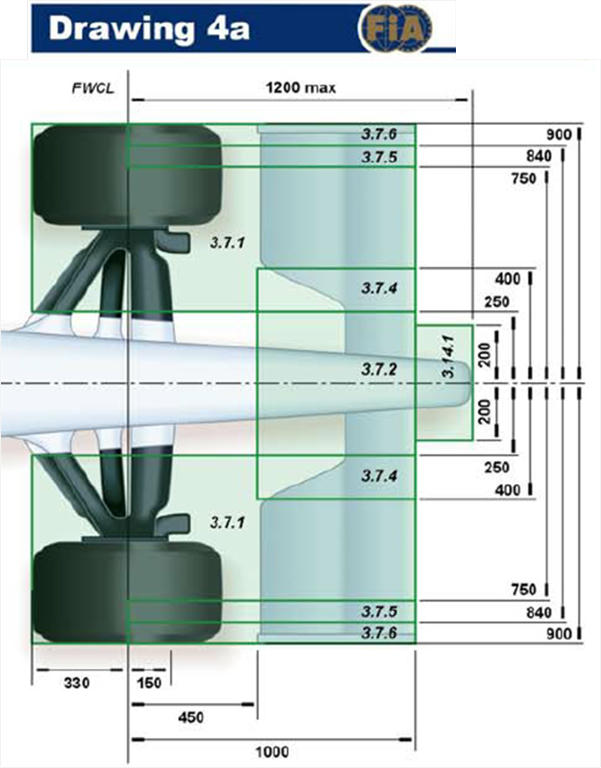For simplicity, lets say the centre of pressure is likely to be centre of the wing cascade, ie 650mm from centre line.
3.17.1 allows 20mm deflection under 100kg load at a point 795mm from the centreline. However the wing endplates are 900mm from centreline, and lets say pylons are 200 from the centreline. Assuming a linear extrapolation from test point to endplate, the test allows 23mm at the endplate, ie 20*(900-200)/(795-200)
We can pro-rata the lever arm of the test load and aero load (A):
Aero Deflection = 23 x (A x (650-200)) / (100*(795-200))
Say 800kg total load on wing, ie 400kg on one side = 70mm deflection at endplate.
Ref for 800kg -
http://www.f1fanatic.co.uk/2010/10/18/t ... grand-prix
or ...
viewtopic.php?f=6&t=7641 (630kg total back in 2005)
The underside of the wing on a flat car is 75mm above ref plane, and that is 50mm above the plank underside. So that’s 125 to underside of plank, or 55mm from deflected wing to underside of plank
We can see that RB run a steeper rake than others, plus their endplate has much more pronounced torsion than others. That torsion means the end plate corner dips closer to the ground, rather like an athlete dipping for the tape.
So the challenge for the other teams is to have a higher rear, and to twist their endplates.
edit -
Looking at the head on pics the pylons are probably 400 apart, say 200 from centreline. I've updated the numbers above to be tidy, but it makes no difference to the answer!






